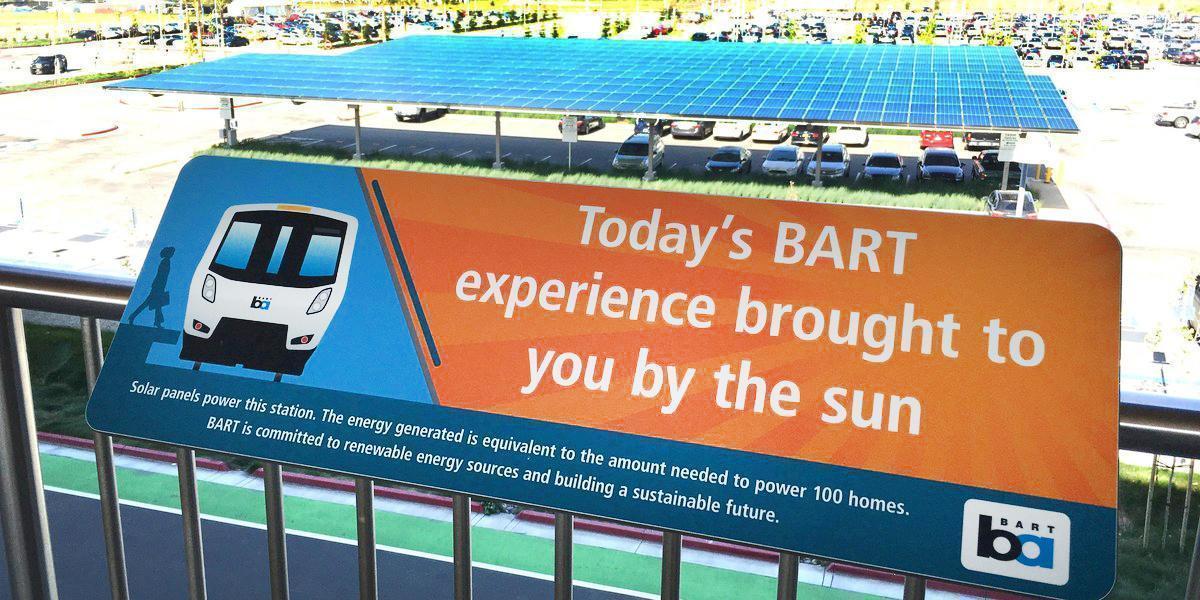
San Francisco’s Rapid Transit Likely Nation’s First to Run on 100% Renewables

Taking public transportation already makes a big difference in reducing your carbon footprint. Now, the San Francisco Bay Area’s rapid transit system is reducing its own carbon footprint by committing to 100 percent renewable energy.
The Bay Area Rapid Transit (or BART) is likely the first electrified public transit system to make this ambitious goal. The BART is used by about 434,000 commuters each workday.
Earlier this month, BART’s board of directors approved a new wholesale electric portfolio policy enabling the transportation agency to buy more power directly from renewable sources, including solar, wind and small hydroelectric facilities.
Transit agencies usually buy power from their local provider but under a 2015 California law, BART has the freedom to choose its own power sources. The aim is to increase its use of renewable energy to 50 percent by 2025, and 100 percent by 2045.
BART said its current portfolio is already 78 percent cleaner in terms of carbon content compared with a typical large customer of electricity utility PG&E, but its new “aggressive guidelines” makes it even greener.
BART is one of the largest power users in Northern California, consuming roughly 400,000 megawatt-hours annually. That’s slightly more than the city of Alameda, which has an estimated population of 80,000.
“Every day, BART takes cars off the road and helps drive down our greenhouse gas emissions,” said BART Director Nick Josefowitz in a statement.
“But especially now, BART and the Bay Area must shoulder even more responsibility to combat climate change. Even though BART is not required to comply with the state’s renewable energy standards, we have committed to purchasing 100 percent renewable electricity and taking a leadership role in decarbonizing our transportation sector.”
BART’s clean energy goals puts it on track to exceed California’s Renewable Portfolio Standard that mandates 50 percent renewables by 2030.
“Given that renewable energy supply costs have fallen significantly in recent years and have approached cost parity with other supply sources, BART has an opportunity to set clean energy goals that are both ambitious and realistic,” BART’s Sustainability Manager Holly Gordon said.

 233k
233k  41k
41k  Subscribe
Subscribe 